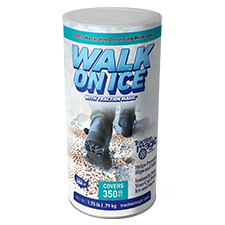How To Install Concrete Driveways: Your Complete Guide

Concrete driveways are relatively easy to install and easier to maintain. As winters approach, your biggest concern is whether magnesium chloride ice melt safe for concrete or if sodium chloride is alright, or maybe using a natural ice melt product will do the trick. The first level lies in having a properly constructed concrete driveway before you choose the correct ice melt product.
Whether you use a salt-free ice melt or not, having a properly installed concrete driveway will help eliminate the cost of repairs and make your driveway last longer. Keeping this specification in mind, Safe Thaw introduced its urea-modified ice melt product with ice melting boosters and special surfactants plus glycols to enable quick action without damaging the environment or the surroundings.

Before choosing the correct salt-free ice melt, let us take a quick look at how to install concrete driveways correctly.
Preparing The Site
Concrete driveways must be installed on solid soil, or they will crack over time. It is best to check the unevenness of the topsoil and add a base material to even it out. Before adding the concrete mix, remove any extra dirt, grass, or weeds. You will need to dig in at least 10 cm deep to ensure that when the concrete mix is poured in or when the concrete blocks are arranged, they are slightly above ground level.
Note: You will need additional material such as sand, clay, wire-mesh reinforcement, etc., to even the surface.
Laying The Concrete
To ensure the concrete mix does not spill outside the perimeter, laying wooden forms anchored firmly with stakes around the driveway will help fill the area correctly. Before pouring the concrete, ensure you dampen the ground slightly with your form and use a spray brush to apply release oil so the forms can be removed easily later. It will also help in evenly spreading salt-free ice melt during winters.
Curing And Finishing
After the concrete has been poured, you must level it with a wooden frame or a big spatula to ensure there are no bubbles, cracks, or open joints. Using a smoothing machine will render it a better finish. During the curing process, check the concrete after around 12 hours to see if there is any anomaly, and you can fix it in advance.
100% salt & chloride-free, fast acting Ice Management Solution
Conclusion
You have heard magnesium chloride ice melt is safe for concrete and contemplating using it during winters. But the challenge will arise if you have not laid the concrete well. From using salt-free ice melt to homemade products, there is a thin line between a good driveway finish and a poor one. Pay attention to the above details while working on your new concrete driveway to ensure you do not face any problems during winters or the rest of the year. Employ professionals, if you must, to get the job done well in advance.
Try Also Our Other Winter Safety Products:
Safe Paw
The Original and #1 Selling Pet and Child Safe Ice Melt for over 20 years. Guaranteed environmentally safe –It won’t harm animals or children, and it won’t damage your property. That’s Safe Paw. Safe Paw can change how winter affects our planet.

Walk On Ice
The handy disposable canister can be taken everywhere, with the same 100% naturally occurring minerals that provide instant traction on ice or snow. Use it on sidewalks, steps, or as an instant traction agent for your car.


